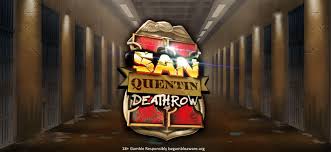
San Quentin 2 Death Row Slot
The phrase San Quentin 2 Death Row Slot evokes a complex tapestry of emotions, histories, and ethical considerations. San Quentin State Prison, situated in California, has long been a symbol of the ultimate punishment—the death penalty. With its storied past and the lives intertwined within its walls, the concept of death row here is not merely a reflection of state policy but also an exploration into humanity’s capacity for both justice and injustice. In this blog post, we will delve deeply into the intricacies surrounding San Quentin and its death row, examining the implications, the stories of those resides within, and the broader societal impacts SV88.
The Historical Context of San Quentin 2 Death Row Slot
Understanding the present-day ramifications of the San Quentin 2 Death Row Slot necessitates a look back at the historical context of San Quentin itself. This prison, established in 1852, has witnessed significant changes in penal philosophy, societal attitudes towards crime, and the evolution of the legal system.
The Origins and Evolution of San Quentin
San Quentin was founded as California’s first state prison and has served multiple roles throughout its history. Initially designed to house those convicted of relatively minor crimes, it later transformed into a facility meant to accommodate the most dangerous offenders.
The architectural design of San Quentin reflects its evolving purpose. Over decades, various structures were added, including cells for murderers and other violent criminals. Each change in architecture signifies shifts in societal views regarding rehabilitation versus punishment—a debate that remains relevant today.
San Quentin has seen its share of infamous inmates—from notorious serial killers to organized crime figures. The prison began executing inmates in the early 1900s, with the electric chair being introduced as a method of execution before transitioning to lethal injection. This transition represents a broader change in public perception of capital punishment, emphasizing a more “humane” approach.
The Role of Death Row in American Society
Death row is a concept that elicits varied opinions across the United States; it presents significant moral and ethical dilemmas. For some, it serves as a deterrent against heinous crimes, while others argue it perpetuates a cycle of violence and retribution.
San Quentin’s death row has become one of the most visible symbols of these debates. It embodies not only the state’s power to take a life but also the realities of wrongful convictions, lengthy appeals processes, and the psychological toll on those incarcerated there. The presence of death row creates a narrative that many grapple with—what constitutes justice?
This tension is further complicated by socioeconomic factors. The reality is that many individuals on death row come from marginalized communities, leading to questions about equity in the application of capital punishment. Does wealth influence the likelihood of receiving a death sentence?
The Changing Landscape of Capital Punishment
In recent years, the conversation around capital punishment has shifted dramatically. Several states have abolished the death penalty entirely, citing moral objections and concerns over wrongful convictions. Others have paused executions amid growing opposition.
In California, public sentiment regarding the death penalty has fluctuated, often reflecting broader sociopolitical trends. With initiatives like Prop 34 aimed at abolishing the death penalty, it becomes clear that California residents are actively engaging in discussions that pertain to human rights and judicial integrity San Quentin 2 Death Row Slot.

